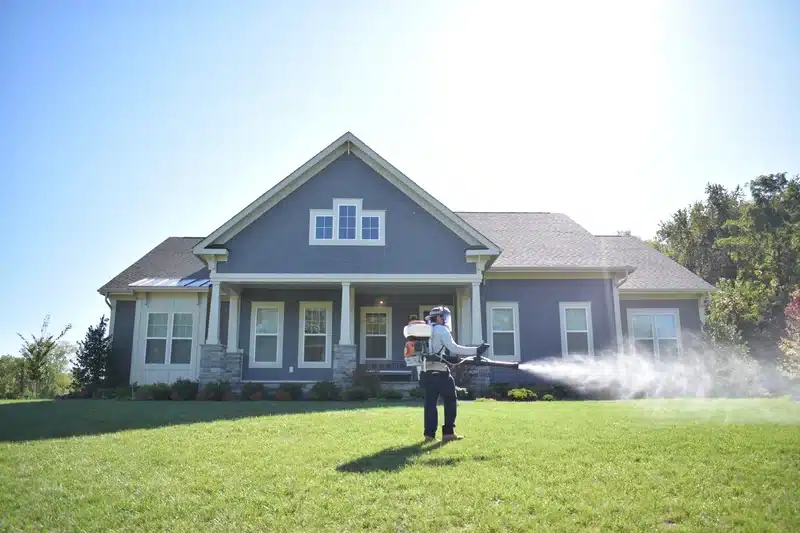When you find a tiny pest on your pet or notice mysterious bites on your skin, it’s natural to wonder what you’re dealing with. Both fleas and ticks are common in the Mid-Atlantic region, but understanding the flea vs tick differences can help you take the right action to protect your family and pets.
Having worked as a licensed pest control technician since 2015, I’ve helped countless homeowners in Virginia, Maryland, and DC identify and treat both of these parasites. The key is knowing where to look, what signs to watch for, and how to prevent future problems.

Basic Biology: Understanding Flea vs Tick Differences
The most important distinction between fleas and ticks comes down to basic biology. Fleas are insects with six legs, while ticks are arachnids (related to spiders) with eight legs. This difference affects everything from how they move to where they hide.
Fleas belong to the Order Siphonaptera and go through complete metamorphosis: egg, larva, pupa, then adult. Most of the flea problem is happening where you can’t see it, in the egg and larval stages.
Ticks follow a different pattern entirely. These arachnids progress through three active stages: larva (called a seed tick), nymph, and adult. Each stage needs a blood meal before moving to the next phase, then drops off the host to molt or lay eggs.
What does the science say? 🔬
According to the Merck Veterinary Manual, roughly 50% of any flea population consists of eggs, 35% larvae, 10% pupae, and only 5% adults. This distribution explains why surface treatments often fail, the majority of the population remains hidden in carpets, crevices, and yard debris where they develop through their immature stages.
Common Flea and Tick Species in Virginia, Maryland, and DC
In our Mid-Atlantic region, you’re most likely dealing with specific species that thrive in our climate and environment.
The Cat Flea Dominance
The cat flea (Ctenocephalides felis) is the main culprit in our area, found on both dogs and cats throughout Virginia, Maryland, and DC. Despite the name, this species doesn’t discriminate; it’s equally happy feeding on any warm-blooded host it can find.
Three Tick Species to Know
The Virginia Department of Health identifies three human-biting tick species commonly encountered in our region:
- Black-legged tick (Ixodes scapularis) - Primary carrier of Lyme disease, active in woodland edges and deciduous forests
- Lone star tick (Amblyomma americanum) - Common in Piedmont and Coastal Plain areas, known for causing alpha-gal meat allergy
- American dog tick (Dermacentor variabilis) - More abundant west of the Blue Ridge, carries Rocky Mountain spotted fever
When a Quick Stop Revealed Tick Behavior
During a road trip several years ago, I made a brief stop at a rest area and decided to stretch my legs by walking into an adjacent field. Within just a few minutes of stepping off the maintained path, I discovered something that changed my understanding of tick behavior.
Key Findings:
- Duration in field: Less than 5 minutes
- What I found: Four ticks already crawling up my leg
- Tick behavior: Actively seeking hosts, not waiting passively
- Key insight: Ticks hunt in outdoor environments rather than living on hosts like fleas
This experience taught me that tick prevention requires understanding their active hunting behavior; they’re not just waiting to fall from trees, they’re climbing up vegetation to find passing hosts.
Where Fleas and Ticks Hide on Your Pets
Knowing where to look on your pets makes identification much easier when comparing flea vs tick infestations.
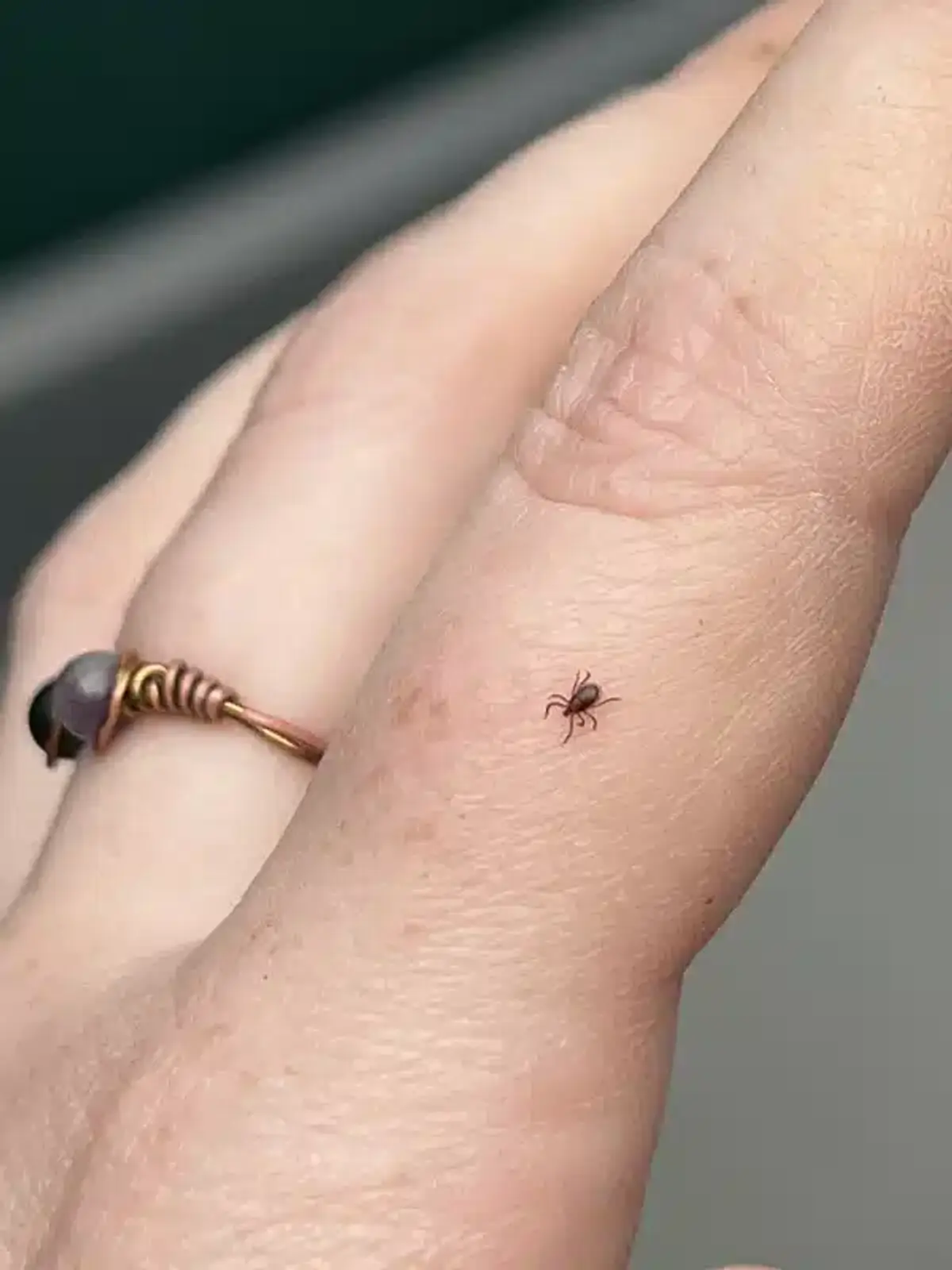
Flea Hotspots
Fleas prefer specific areas on pets where the skin is thinner and blood flow is good. Check these areas regularly:
- Lower back and tail-head area
- Inner thighs and groin
- Belly and chest
- Neck and behind ears
Tick Attachment Sites
Ticks seek out warm, protected spots where they can attach and feed undisturbed. During your daily pet checks, focus on:
- Ears and eyelids
- Under the collar area
- Armpits and groin
- Between toes
- Underside of the tail
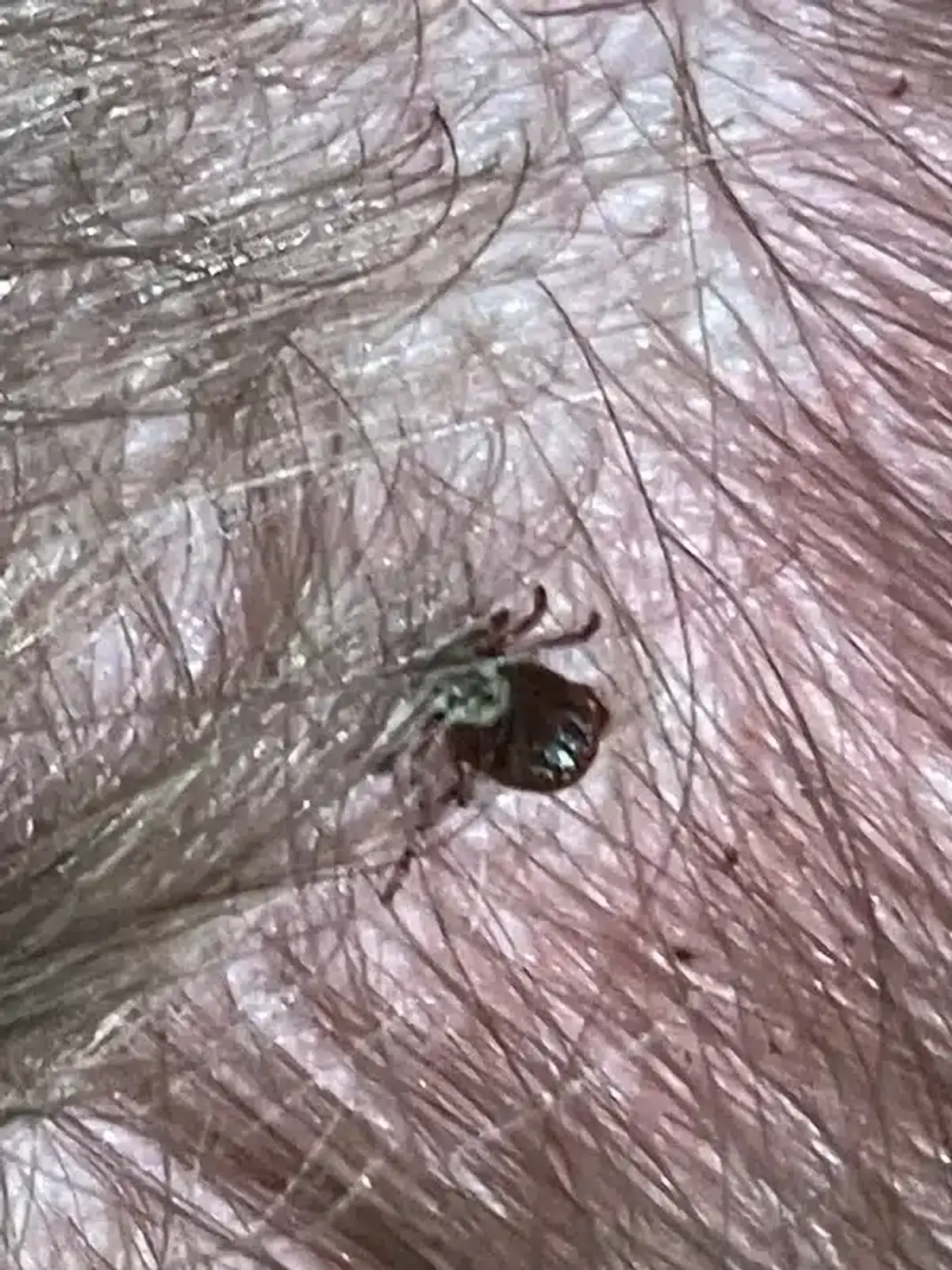
Flea and Tick Hiding Spots in Your Yard and Home
Understanding where these pests live in your environment helps with both identification and prevention strategies.
Flea Environments
Flea larvae need specific conditions to survive. They thrive in shaded, moist areas with organic matter like:
- Under decks and porches
- Sandy soil around dog houses
- Deep-pile carpeting indoors
- Areas where pets rest frequently
Importantly, flea larvae desiccate and die when humidity drops below 50%. This is why flea problems are often worse in humid basements or during our muggy Mid-Atlantic summers.
Tick Territory
Ticks prefer the transition zones between maintained and wild areas. In Northern Virginia and surrounding areas, I commonly find them in:
- Edges where lawn meets woods
- Tall grasses and brush piles
- Leaf litter under trees
- Stone walls and wood piles
- Areas where deer travel regularly
The Fairfax County Health Department emphasizes that deer pathways act as corridors for tick movement, which explains why some yards have more problems than others.
Identifying Bites: Flea vs Tick Patterns
Bite patterns often provide the clearest clues for distinguishing between these two parasites.
Flea Bite Characteristics
Flea bites on humans typically appear as small, intensely itchy bumps that are 1-4 millimeters across. The CDC notes they often occur in clusters or linear patterns called “breakfast-lunch-dinner” lines. You’ll usually find them on ankles, calves, and around the waistline where clothing is tight.
The itching from flea bites can be intense and may last several days. Some people develop allergic reactions that cause larger, more persistent bumps.
Tick Bite Appearance
Tick bites are usually single and painless initially. You might notice a small puncture mark where the tick was attached. However, the real concern isn’t the bite itself but what follows.
Critical Warning Signs After Tick Bites
- Erythema Migrans Rash: Expanding circular rash that appears in 70-80% of early Lyme cases, typically 3-30 days after the bite
- Bull’s-Eye Pattern: May clear centrally, creating the classic target appearance
- Flu-Like Symptoms: Fever, headache, fatigue, and muscle aches within days to weeks
- Seek Medical Care: Immediate evaluation if any symptoms develop within 30 days
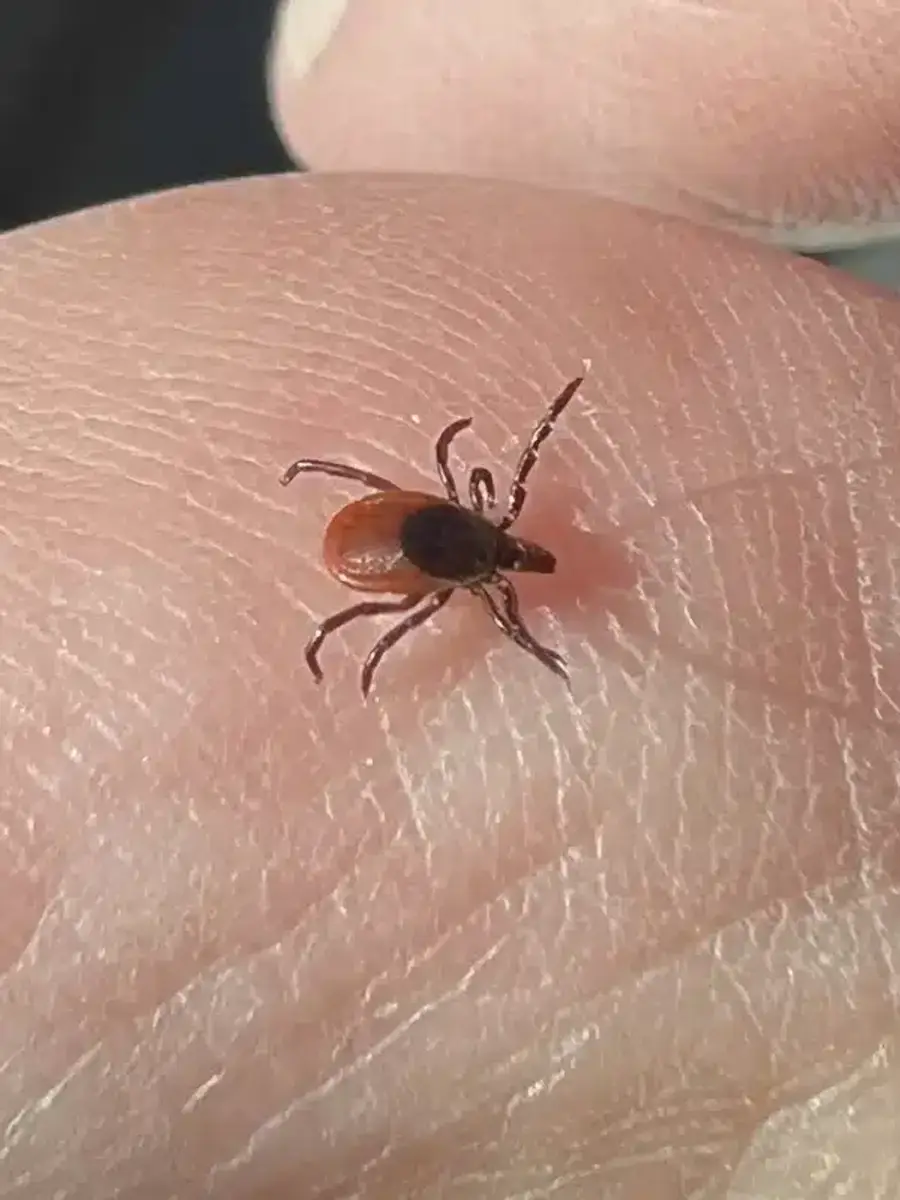
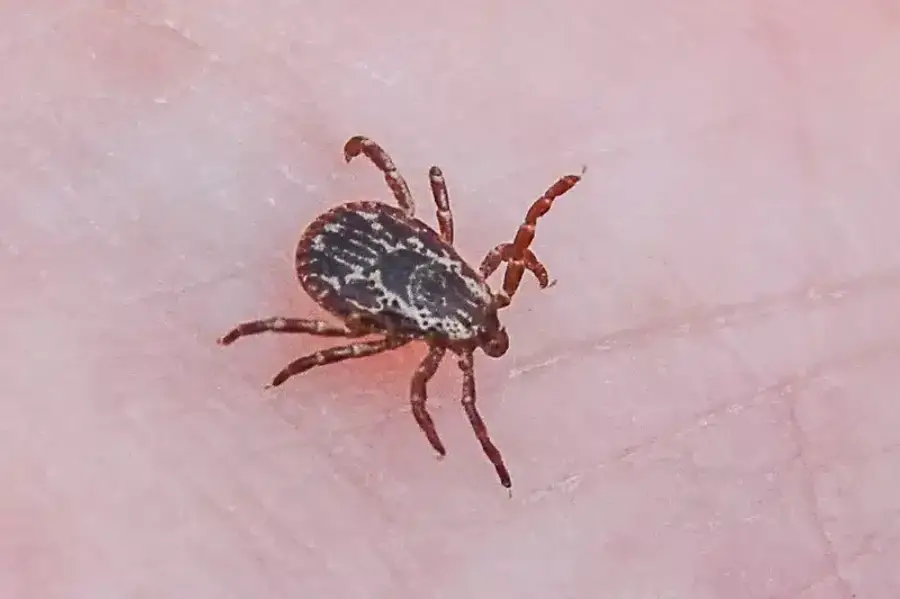
Health Risks: Why the Flea vs Tick Distinction Matters
While both parasites pose health risks, the threats they present are quite different.
Flea-Related Health Issues
Fleas can cause several problems for both pets and humans:
- Flea Allergy Dermatitis (FAD) - The most common problem in pets
- Tapeworm transmission - Dipylidium caninum spreads when pets ingest infected fleas
- Bartonella infection - Can cause cat scratch disease in humans
- Anemia - Possible in heavy infestations, especially in young animals
Tick-Borne Disease Concerns
Having seen family members and colleagues personally affected by Lyme disease, I can’t stress enough how serious tick-borne illnesses can be. The impacts on diet, energy levels, and overall quality of life can be devastating.
Each tick species in our region carries different pathogens:
- Black-legged ticks transmit Lyme disease, anaplasmosis, babesiosis, and Powassan virus
- Lone star ticks carry ehrlichiosis, STARI, Heartland virus, and can trigger alpha-gal meat allergy
- American dog ticks are primary vectors for Rocky Mountain spotted fever
Flea and Tick Prevention Strategies for Your Pets
Modern veterinary products offer excellent protection when used correctly.
Flea and Tick Repellent Options
Permethrin-containing spot-on treatments like K9 Advantix II and Vectra 3D work by repelling ticks before they attach. This approach prevents disease transmission more effectively than products that only kill after attachment.
Long-Term Flea and Tick Collar Protection
The flumethrin/imidacloprid collar (Seresto) provides 8-month protection against both fleas and ticks. The key is ensuring it makes contact with your pet’s skin and fits snugly without being too tight.
Oral Flea and Tick Medications
Isoxazoline-class drugs (NexGard, Simparica, Credelio, Bravecto) kill attached ticks within 12-24 hours and adult fleas within hours. These prescription medications require a veterinary consultation but offer reliable protection.
| Focus | Flea Control | Tick Control |
|---|---|---|
| Best Approach | Kill after contact | Repel before attachment |
| Timeline | Hours to kill | 12-24 hours to kill |
| Year-Round Need | Yes - survive indoors | Yes - active at 40°F+ |
The Cornell University College of Veterinary Medicine recommends year-round use since nymphal ticks can be active at temperatures as low as 40°F, and fleas survive indoors throughout winter.
Yard Management: Integrated Pest Control
Effective yard management requires different strategies for flea vs tick control.
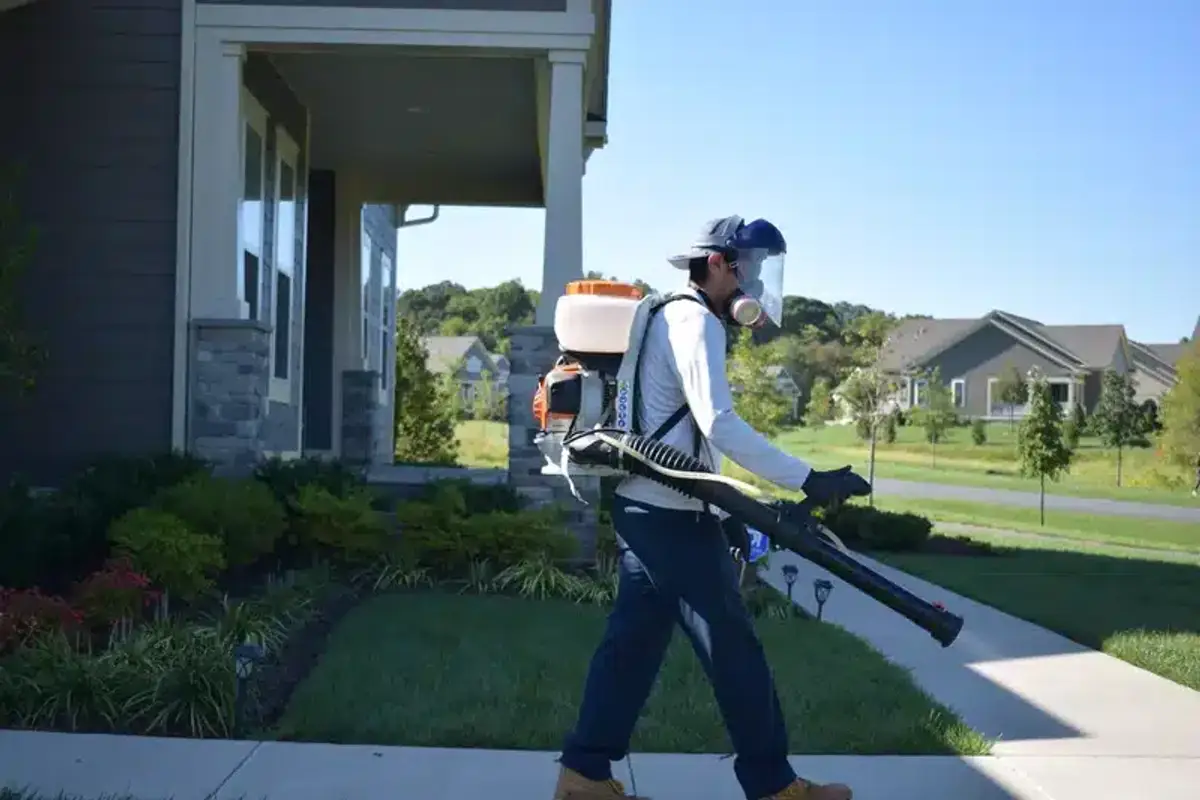
Tick-Focused Strategies
Creating an unfriendly environment for ticks involves:
- Regular mowing to increase sunlight and reduce humidity
- Removing leaf litter and brush from yard edges
- Installing barriers like 3-foot wood-chip strips between lawn and wooded areas
- Discouraging deer with fencing and deer-resistant plants
- Relocating bird feeders away from high-traffic areas
Targeted acaricide applications work best when timed with nymphal tick peaks, typically late March through early May in our region.
Flea Control Measures
Fighting fleas requires addressing both adult and larval stages:
- Regular vacuuming of carpets and pet areas every 2-3 days
- Hot water washing of pet bedding at 120°F or higher
- Treating shaded resting spots where pets spend time outdoors
- Using growth regulators to prevent larval development

Flea and Tick Bite Treatment and Management
Quick, appropriate response to bites can prevent complications and provide relief.
Flea Bite Treatment
Flea bite management focuses on symptom relief:
- Apply cold compresses to reduce swelling
- Use 1% hydrocortisone cream for itching
- Take oral antihistamines if needed
- Monitor for signs of secondary infection from scratching
Tick Removal and Monitoring
Proper tick removal requires fine-tipped tweezers to grasp the tick close to the skin and pull straight out with steady pressure. Disinfect the bite site and save the tick for identification if possible.
Monitor the bite area and watch for fever or rash development for 30 days. Seek medical care promptly if symptoms appear.
Seasonal Flea and Tick Activity in the Mid-Atlantic
Understanding seasonal patterns helps with timing prevention and treatment efforts.
Peak tick activity varies by species: Ixodes nymphs are most active May through early August, while American dog ticks and lone star ticks peak April through September. Adult black-legged ticks can be active November through March on warm days.
Flea pressure builds through summer, reaching peak levels August through October outdoors. However, indoor flea problems can persist year-round thanks to climate-controlled homes.
Professional Pest Control: When to Call Flea and Tick Experts
Some situations require professional intervention. Consider calling licensed technicians when:
- Pet treatments aren’t controlling the problem
- You’re finding ticks regularly despite prevention efforts
- Family members develop symptoms after tick bites
- Flea problems persist after thorough home treatment
Our approach involves treating the ecotone areas of properties, those transition zones where landscaping meets more natural terrain. We use targeted applications in March and November for tick control, plus monthly treatments April through October focusing on the areas where these pests actually live and breed.
Understanding the differences between fleas and ticks helps you protect your family and pets more effectively. While both parasites pose risks, knowing their biology, preferred habitats, and seasonal patterns allows for targeted prevention and treatment strategies that actually work.
If you’re dealing with persistent flea or tick problems around your Virginia, Maryland, or DC home, don’t hesitate to reach out for professional help. Call us at 703-683-2000 or email info@bettertermite.com for an expert consultation and customized treatment plan for your specific situation.
Frequently Asked Questions
How can I tell if my pet has fleas vs ticks?
+
Check different areas on your pet. Fleas typically hide around the tail base, belly, and inner thighs, leaving behind black 'flea dirt' that turns red when dampened. Ticks attach in protected areas like ears, under the collar, and between toes, appearing as small, dark bumps that don't brush off easily.
Which is more dangerous - fleas or ticks?
+
Ticks pose more serious health risks to humans, carrying diseases like Lyme disease, Rocky Mountain spotted fever, and ehrlichiosis. Fleas primarily cause discomfort and allergic reactions, though they can transmit tapeworms to pets and occasionally cause Bartonella infections in humans.
Do fleas and ticks live in the same areas of my yard?
+
Not typically. Fleas prefer shaded, moist areas with organic matter where pets rest, like under decks or in sandy soil. Ticks favor transition zones between maintained lawn and wild areas, leaf litter, and tall grass where they can climb up to find hosts.
Can the same pet medication prevent both fleas and ticks?
+
Yes, many modern veterinary products protect against both. Combination treatments like Seresto collars, NexGard, and Simparica are designed to kill or repel both parasites. However, repellent-based products work better for tick prevention since they prevent attachment rather than killing after feeding begins.
How long do fleas vs ticks take to complete their life cycle?
+
Fleas develop much faster, completing their life cycle in 2-8 weeks under optimal conditions. Ticks take 2-3 years to go from egg to adult, with each active stage requiring a blood meal before progressing to the next phase.
What time of year are fleas and ticks most active in Virginia?
+
Tick activity peaks vary by species; nymphal ticks are most active May through August, while adult ticks can be active April through September and even on warm winter days. Fleas build up through summer and peak August through October outdoors, but remain active indoors year-round.
Should I remove a tick myself or see a doctor?
+
You can safely remove ticks yourself using fine-tipped tweezers. Grasp close to the skin and pull straight out with steady pressure. Clean the area with alcohol and save the tick for identification. See a doctor if you develop fever, rash, or flu-like symptoms within 30 days.
Why do I have more flea problems in some seasons?
+
Flea reproduction speeds up in warm, humid conditions typical of Mid-Atlantic summers. Additionally, pets spend more time outdoors during pleasant weather, increasing exposure. Indoor heating in winter can also create ideal conditions for continued flea development.
With five years of hands-on experience in the pest control industry, George Schulz is a registered technician with the Virginia Pest Management Association and a proud third-generation professional in a family business that's been protecting homes for over 57 years. He manages and trains a team of service pros while also leading internal research efforts—recently spearheading a deep-dive review of thousands of documents on pest control materials to hand-pick the most kid and pet friendly, most effective solutions tailored specifically for homes in the DC metro area.
